Novatel Wireless MiFi 4510L Review - The Best 4G LTE WiFi Hotspot?
by Brian Klug on July 14, 2011 5:20 AM ESTPhysical Comparisons
The 4510L is a fair amount chunkier than the 2200 in photos as well, though it retains roughly the same credit-card outline. To me, the old 2200 always felt a bit too light, if that’s possible. I’ve carried the 2200 around at a number of different conferences and always wound up constantly patting my pockets to make sure it was still there - the 4510L definitely remedies that problem, if you could call it one.
Industrial design is changed as well. The old Verizon MiFi was flat black and relatively spartan. I like many others opted for the then-unlimited Virgin Mobile version (before unlimited finally ended) which has a faux-aluminum textured plastic topside, and the same soft touch underside.

The original MiFi 2200 on Verizon
The new 4510L is considerably less understated than that old flat black model, including a chrome lip around the edge, chrome recessed power button, shiny plastic lid, and an e-ink top display.
The e-ink display shows battery status with four gradations, signal strength with four, and the up to five connected clients using small circles at the bottom. There’s also a roaming triangle indicator, and I’m led to believe a target symbol for when GPS is active, though I’ve never seen those last two appear. There’s no network status indicator on the e-ink display (that is to let one differentiate between EVDO, 1xRTT, or LTE), for that, you need to use a good-ol’ LED.
Approximately where the old 2200 placed its status LED is where the 4510 has its own. The status LED blinks when there’s network traffic (a constant rate, not proportional to traffic throughput), and is solid when idle. The actual connectivity state is communicated using color - it’s purple when connected to 1x or EVDO, and green when connected to LTE. Unlike the old 2200 software, there’s no way to disable the LED, which can get pretty annoying when working in a dark lair, er... office.
It also just seems a bit confusing to have an LED at all, since on one hand you could make the argument that Novatel went with the e-ink display to cut down on power consumption. No doubt it does make a difference, but then we have a LED below it which blinks endlessly during normal use, and can’t be disabled. No doubt to make the e-ink displays affordable, Novatel had to use a display with segments that could be used across its product lineup. There simply isn’t space to have LTE, 1xRTT, EVDO, GPRS, EDGE, UMTS, HSPA (with and without +) indicators on the e-ink display without possibly using two character, fourteen-segment displays.
The other interesting challenge that having an e-ink display poses is that when you pull the battery, the display indicators persist indefinitely. Only a clean power off (achieved by holding the button down for five seconds until the LED turns solid yellow) clears the display entirely. I find that the power on and power off scheme on the 4510L is confusing and counter-intuitive. Turning the device on simply requires pressing the button one short time (even a quick tap does it), but turning it off takes a longpress. The LED color also flashes yellow happens when the 4510L is charging but not turned on.
The underside of the 4510L is just like the old 2200 and coated in a soft touch black material. There’s a battery release button which lets the battery cover pop off and slide back. I’m surprised that Novatel is still putting the default SSID and password on the outside of the box. It seems pretty obvious that this should go on the inside cover, or better yet, below the battery, especially considering how many default configured portable hotspots of all kinds I see floating around, but I digress.
The 4510L carries a 5.6 Whr battery which is close in size to the SCH-LC11’s 5.55 Whr, and considerably larger than the old 2200’s 4.25 Whr. It’s a different size and shape, so there’s no reusing your old batteries, though there are several extended capacity third-party batteries already on the market for the 4510L.
Underneath that battery is of course the SIM slot. Getting that SIM out requires pressing a plastic tab down, similar to what I’ve seen with other Novatel Wireless modems.
Inside the 4510L box is a seriously beefy 5.5 watt USB charger which isn’t quite pocketable due to its shape, but should provide ample power for quick charging. Something a bit more slimline or amenable to travel might be preferred, but a charger that cranks out 1.1 A is also good, even though charging time is an advertised 2.5 to 3 hours. Also in the bag is a USB cable with an interesting sticker which reads “The USB cable is only for software upgrades.” That pretty much sums up USB connectivity, which doesn’t include device-as-modem support. You can charge over USB (and ostensibly update firmware) but not much else. That pretty much sums up the 4510L’s hardware aesthetics.


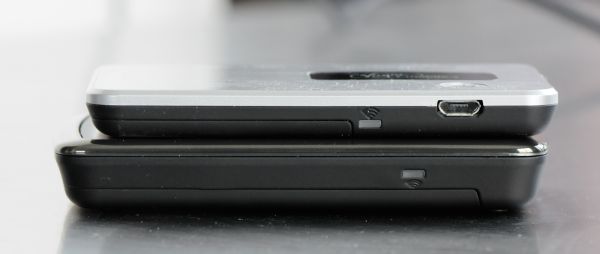

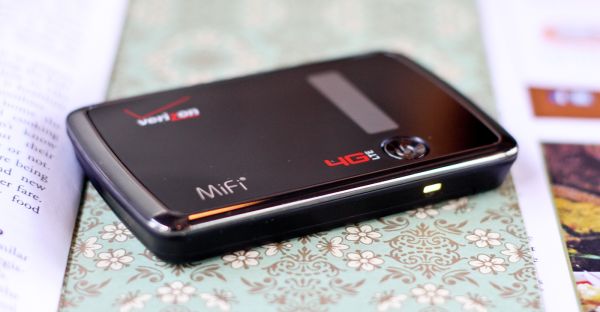
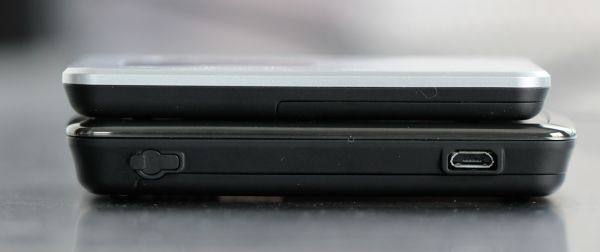
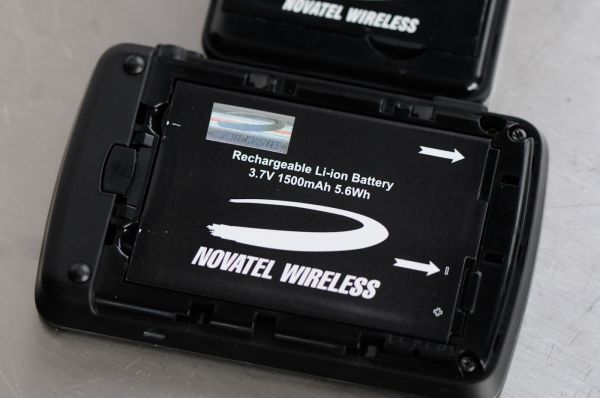

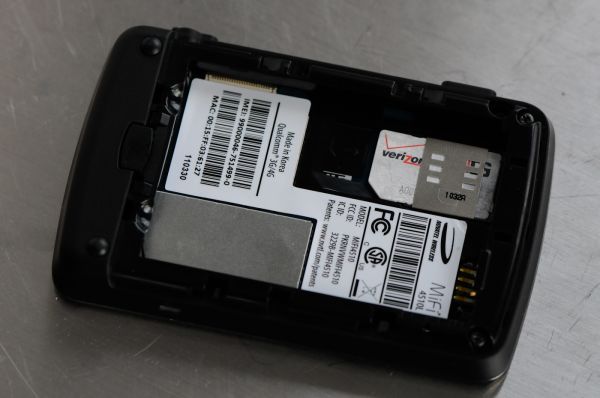








24 Comments
View All Comments
quiksilvr - Thursday, July 14, 2011 - link
Wouldn't it make sense to pay for speed instead? I guess the LTE network needs to be more widespread in order for this to work, but it just seems like a sick joke. Oh here's 10 Mbp/s, enjoy it for an hour a month!>:(
Brian Klug - Thursday, July 14, 2011 - link
That's actually *exactly* what AT&T's plans for LTE are. Part of their plan will involve QoS enforced speed tiers just like any other ISP. That was part of what was leaked a while back, you can see for yourself here: http://twitpic.com/5q42gxAlso speeds will be between 8-12 Mbps on AT&T's 700 / 1700 / 2100 MHz LTE deployment.
zanon - Thursday, July 14, 2011 - link
Of course it makes sense, on every network. Bandwidth caps and QoS tiers are what all connections should be, it's what actually is limited. Datacaps exist because it makes it easier to both milk people for more money, and to limit disruption to outdated existing technologies. Given the control concentrated into so few hands however it's very hard to see anyway to get this situation fixed.mlosee222 - Thursday, July 14, 2011 - link
Good review, you are spot on about the lack of configuration options in the web front end. My device is never further than arm's length and it would be great to turn down the wifi power. I actually learned how to write an android app specifically so I could keep track of my data usage and view connection stats on my phone without being logged in the browser interface. Its functional but the GUI is about as pretty as a linux shell.I don't have LTE in my area yet, although I got to use it a little bit in Vegas. In my experience the 45010L had trouble switching between 3G/4G and required a reboot to get the signal back. I did about five speed tests in Vegas; never broke 5mb and latency was never below 100ms.
LTE just went live in Salt Lake and my area *should* be getting it soon. The last couple weeks I've periodically seen phantom LTE signals with good stats (-60 dbm, 8 snr) but am so far unable to connect. I'm not sure if its a real signal or if the device is lying to me.
I actually use the 4510L exclusively for the data plan on my Nexus S. I don't mind carrying another device in my pocket since I get a data connection that actually works reliably. In my opinion, its a good idea to decouple the data connection from the phone. Tethering a PC is mandatory for my workload and I don't like the red tape carriers put in the way of using phones as a hotspot. That, and its nice to get LTE with a phone that has only an HSDPA antenna.
Overall I'm satisfied with the 4510L. I haven't really experienced LTE yet, although I'm tickled pink with the 3G connection alone. Then again, I'm just happy to get away from the stone-age, overloaded TMobile towers.
jrs77 - Thursday, July 14, 2011 - link
http://www.huaweidevice.com/worldwide/productFamil...The Huawei E5830 has all you want. It supports all bands, has a neat web-interface to configure it, has no sim-lock and supports USB-storage. Oh... and it's dirt-cheap for $80 and can connect up to 5 clients simulatanously.
dreddly - Thursday, July 14, 2011 - link
cool. this sounds like what I need. Our LTE is missing in CanadaBrian Klug - Thursday, July 14, 2011 - link
Maybe next we will check out one of these, I carry around a couple of Huawei modems for personal use that I've never really reviewed or anything. Their Mobile WiFi lineup seems to be gaining a lot of traction lately.-Brian
ggathagan - Friday, July 15, 2011 - link
But it doesn't list as a 4G/LTE deviceyelped - Thursday, July 14, 2011 - link
Sorry for being off-topic, but what's up with Anand's Evo 3D review? The self-evident answer is that he seems pretty busy lately.Thanks.
Brian Klug - Thursday, July 14, 2011 - link
He's working on it, just busy ;)-Brian